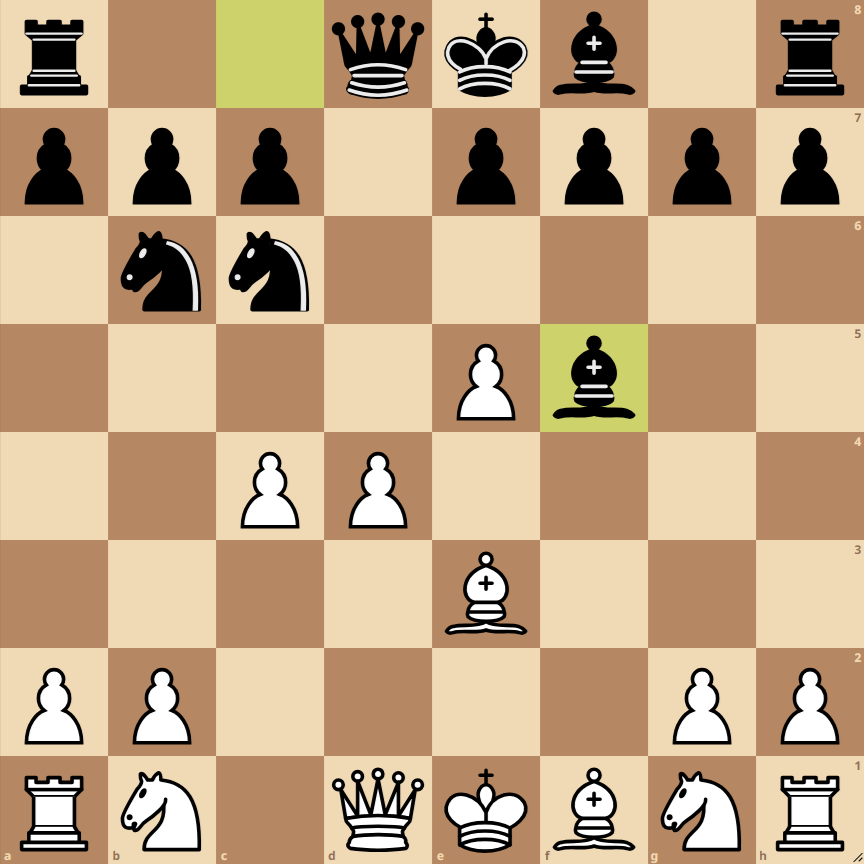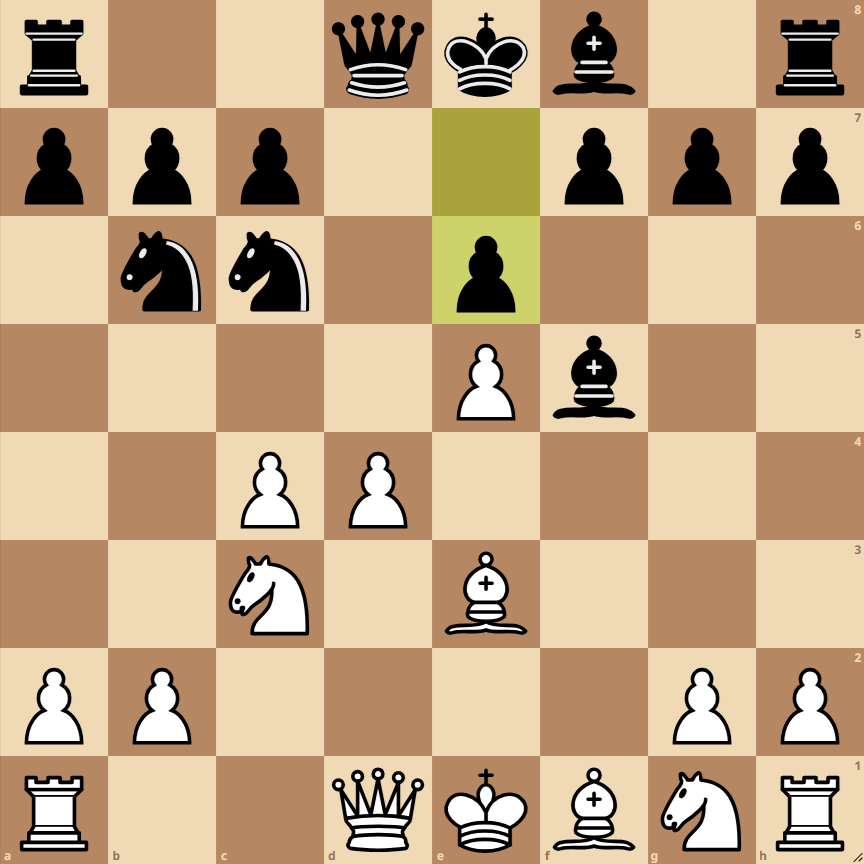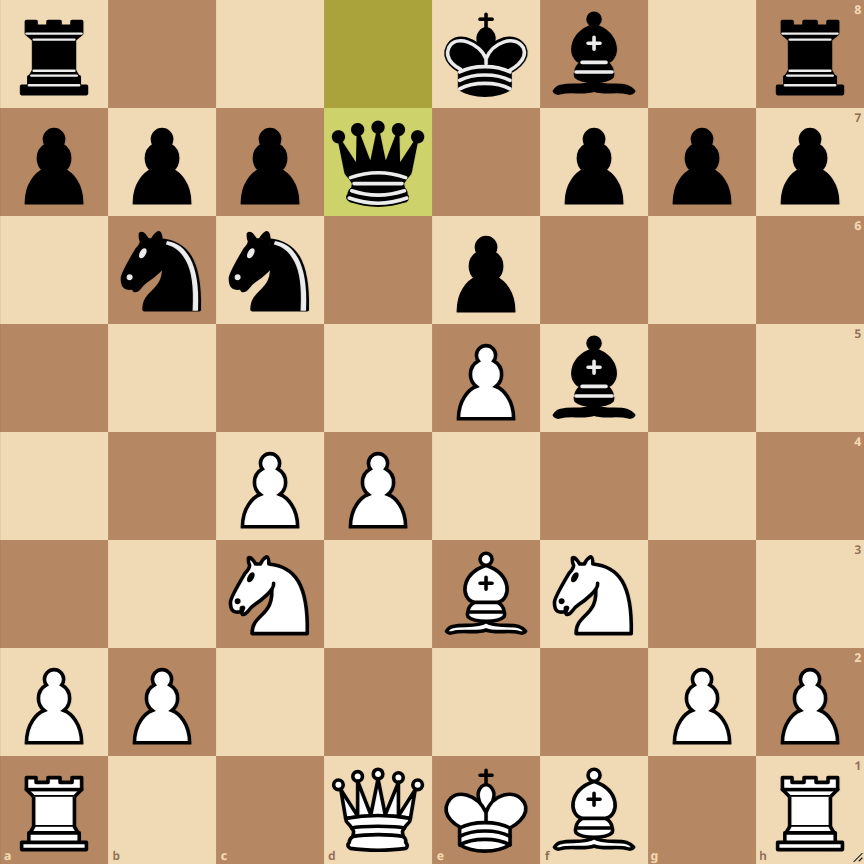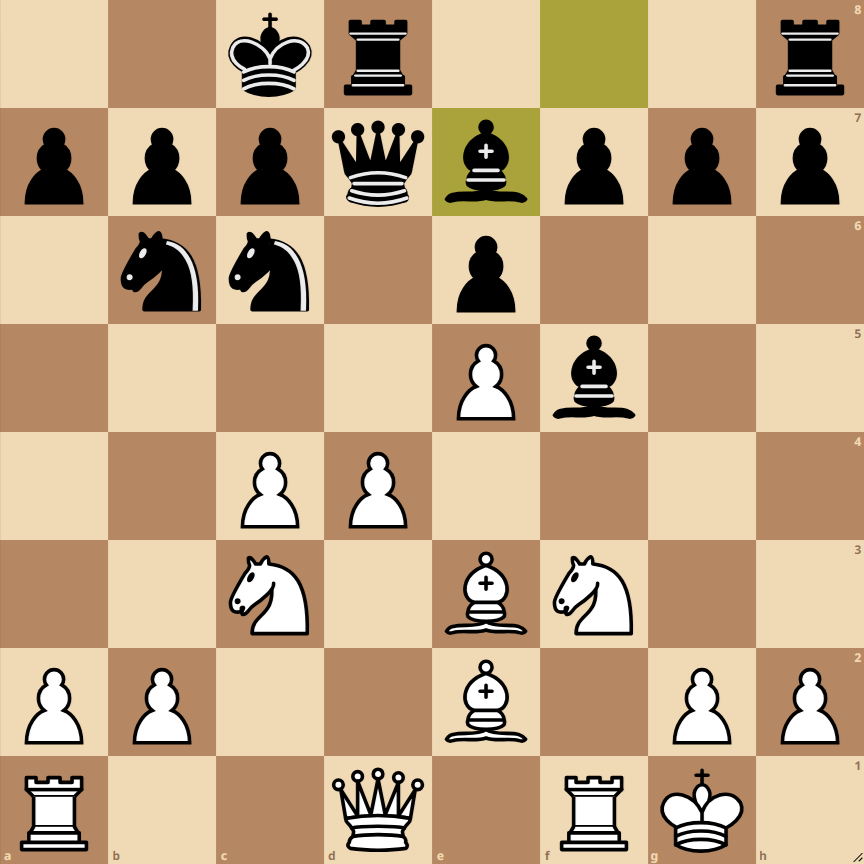How to Play the Opening: Alekhine Defense: Four Pawns Attack, Tartakower Variation
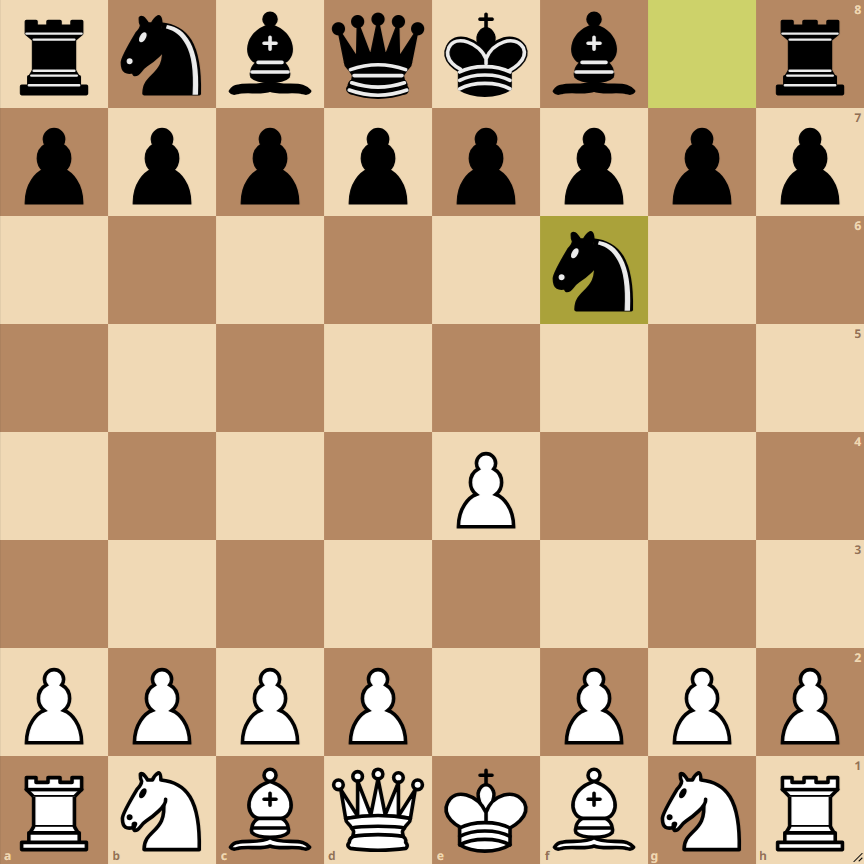
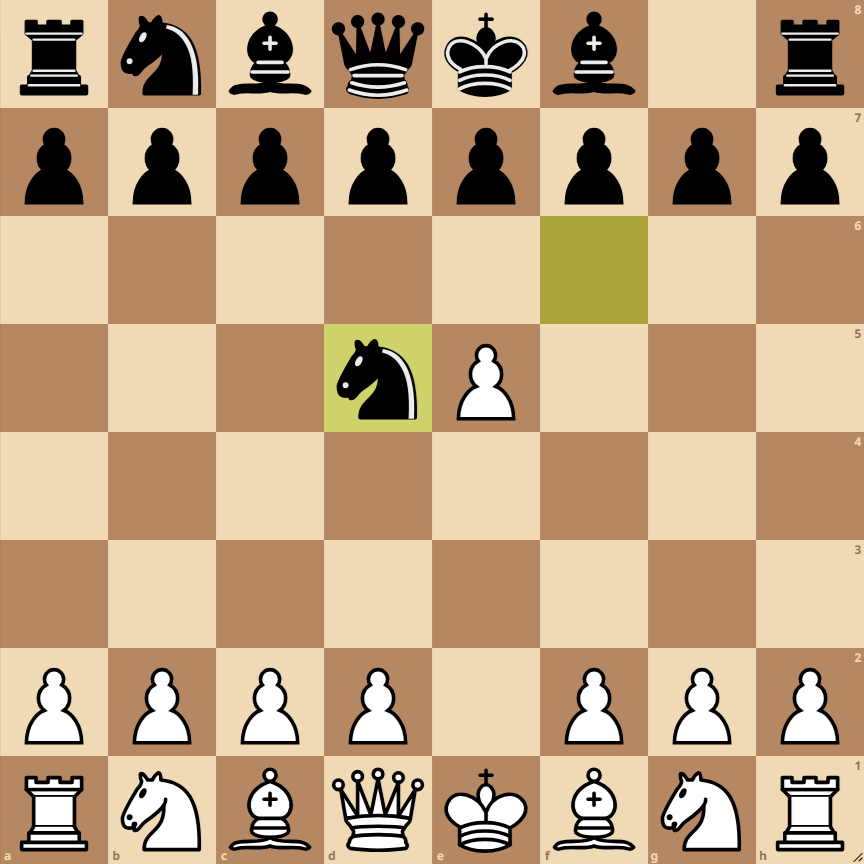
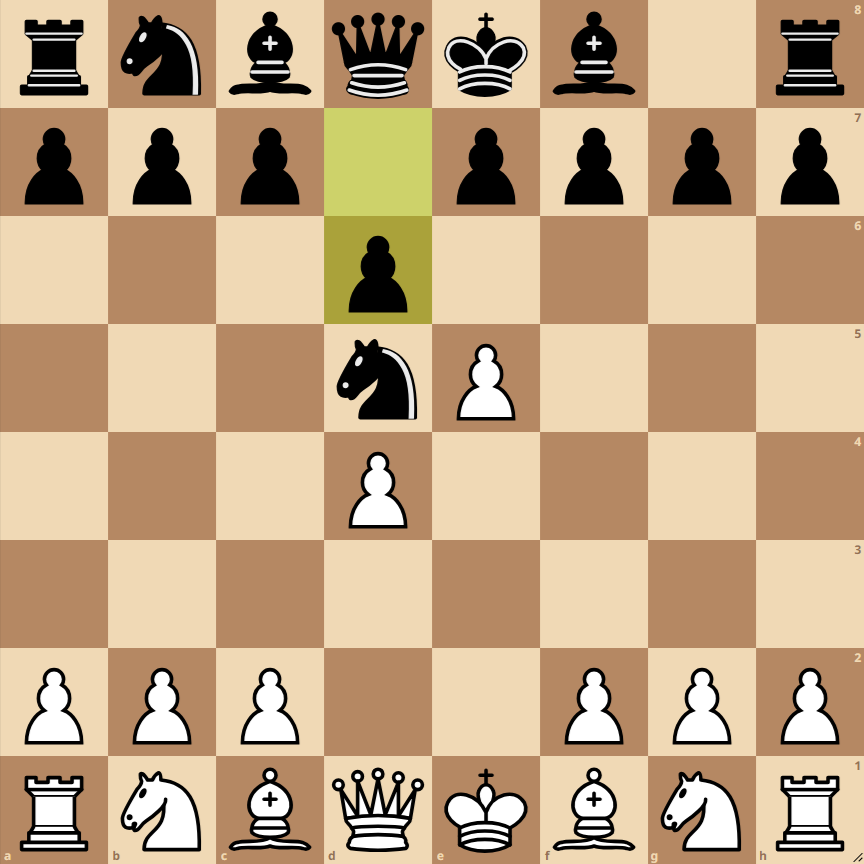
- 1. e4 Nf6: White advances the pawn to e4, aiming to control the center. Black responds with the knight to f6, initiating the Alekhine Defense.
- 2. e5 Nd5: White advances the pawn to attack the knight on f6, which moves to d5.
- 3. d4 d6: White strengthens the center with a second pawn. Black responds with d6, preparing to break in the center.
- 4. c4 Nb6: White continues advancing in the center, putting pressure on the knight on d5, which retreats to b6.
- 5. f4 dxe5: White plays f4, reinforcing e5, while Black captures the pawn on e5.
- 6. fxe5 Nc6: White recaptures on e5. Black develops the other knight to c6, increasing pressure in the center.
- 7. Be3 Af5: White develops the bishop to e3, and Black responds with the bishop to f5, aiming to control central squares.
- 8. Nc3 e6: White’s knight moves to c3, and Black advances the pawn to e6 to strengthen the center and prepare the bishop’s development.
- 9. Nf3 Qd7: White’s knight goes to f3, and Black’s queen moves to d7, aiming to connect the rooks and improve piece coordination.
- 10. Ae2 O-O-O: White kingside castles, while Black queenside castles, seeking safety for the king and activating the rook.
- 11. O-O Ae7: White kingside castles, and Black develops the bishop to e7, preparing coordination of major pieces.
Opening: Alekhine Defense, Four Pawns Attack, Tartakower Variation
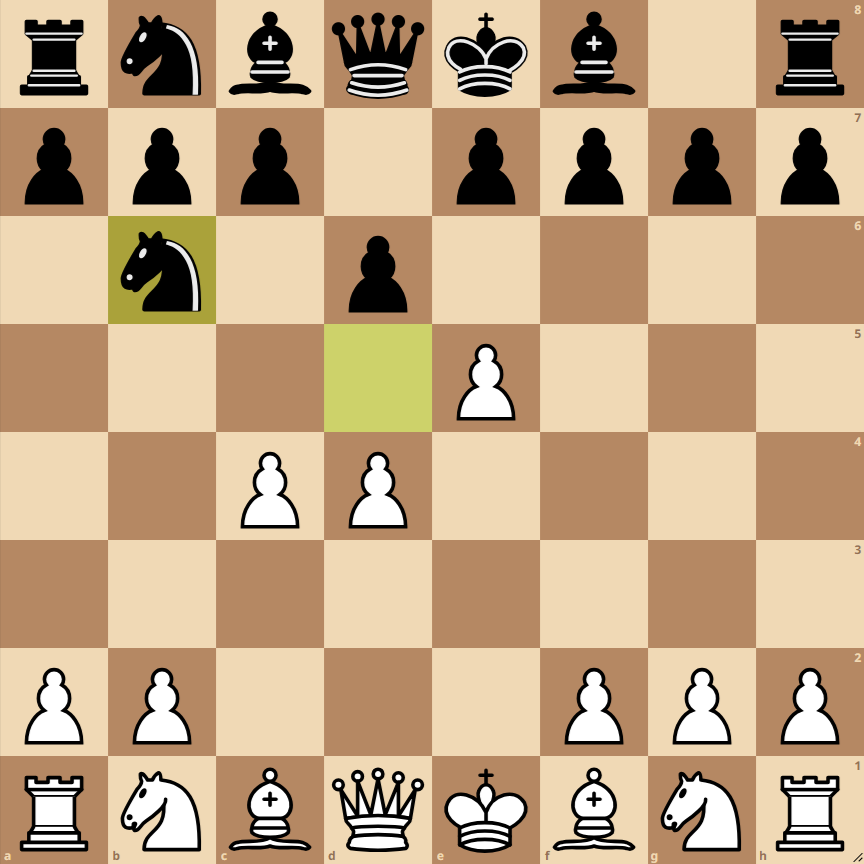
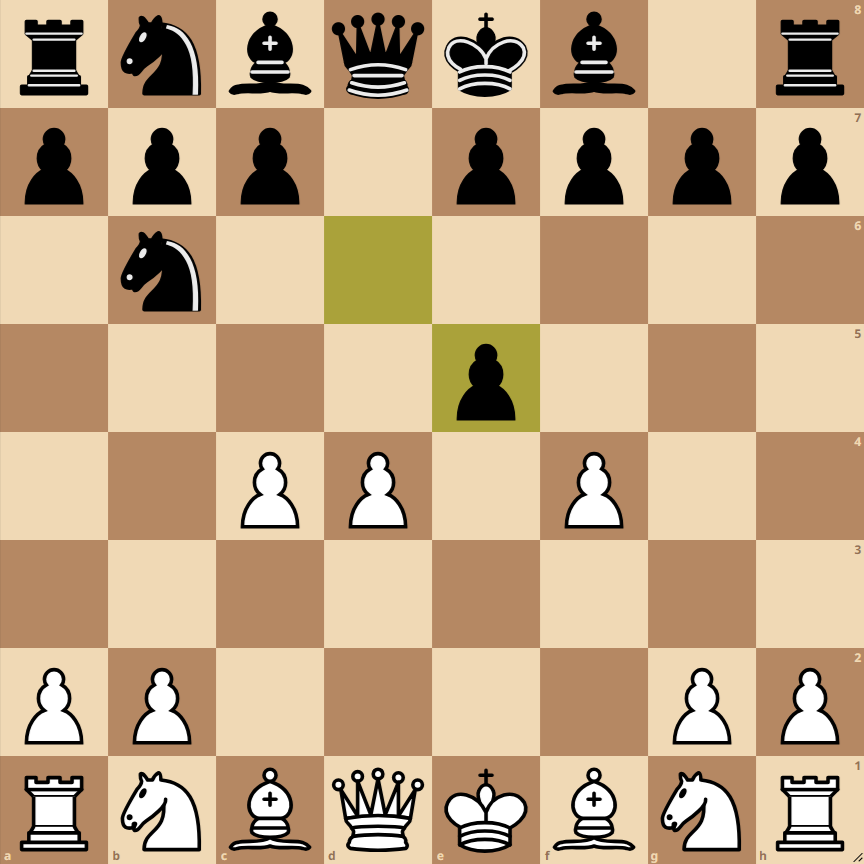
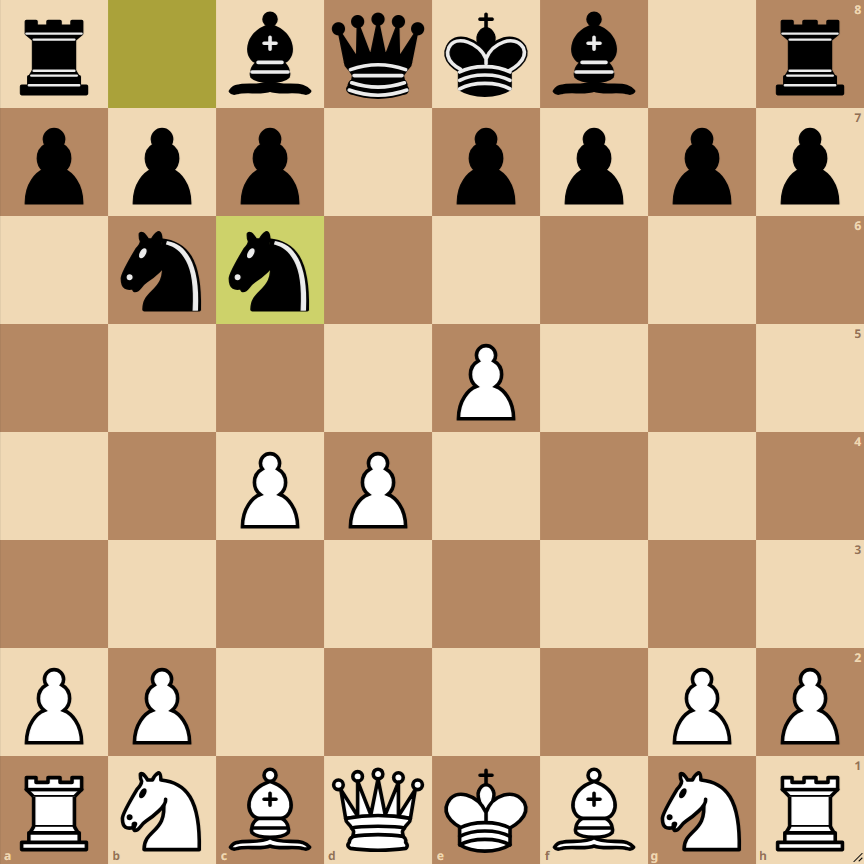
The current position on the board after 11…Be7 results from an aggressive and ambitious sequence by White, characteristic of the Four Pawns Attack in the Alekhine Defense. This opening is known for its dynamic nature and positions rich in tactics.
Strategy and Tactics for White:
- Center Control: White has advanced four pawns in the center, giving them significant spatial control. This control should be used to launch attacks on the kingside or advance in the center when opportune.
- Piece Development: All minor pieces are developed. Connecting rooks and positioning the queen effectively for possible attacks are crucial.
Next Moves:
- Qd2: Aims to connect the rooks and prepare possible queenside castling. Additionally, it places the queen in a more active position, supporting pawn advances or kingside attacks.
- a4: Seeks to open lines on the queenside and disrupt the position of the knight on b6. This move can be preparatory for a broader attack or creating weaknesses on Black’s ranks.
- c5: Advances in the center and directly attacks the knight’s position on b6, forcing Black to react. This move can open lines and diagonals for a more direct attack.
Strategy and Tactics for Black:
- Counterplay in the Center and Queenside: Black should look for opportunities to counter the strong center of White, possibly through breaks in the center or activity on the queenside.
- Piece Activation: The position of Black’s pieces is more defensive, but it is crucial to seek activation, especially for the rooks and the queen, to respond to White’s attacks effectively.
King Safety: The Black king has queenside castled, which can be a target for White’s attacks. Black should be attentive to fortify the king’s position and avoid weaknesses on the kingside.
Conclusion:
The position is tense and complex, with possibilities for both sides. White has the advantage of space and attacking opportunities but must be aware not to overextend. Black, on the other hand, has counterplay opportunities and should aim to activate their pieces to challenge White’s center control. The game is at a critical juncture, and the next moves will be decisive in establishing the balance of power on the board.
